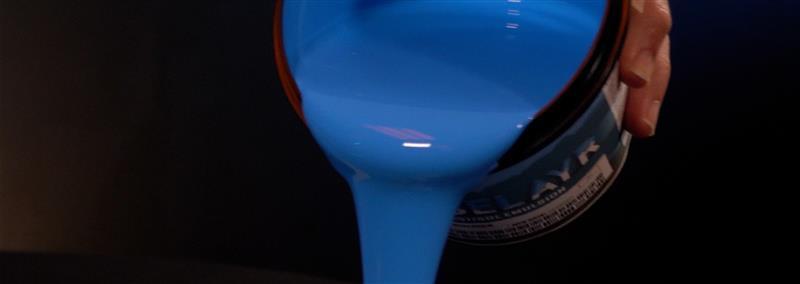Many printers exclusively use plastisol ink. If this sounds like you, check out Baselayr Plastisol emulsion. The high performance emulsion will streamline production by exposing faster, rinsing out quicker, and reclaiming with less effort. Want to get the most from this emulsion? Expert Colin Huggins walks through proper exposure methods and coating techniques to elevate your dark room.
WHAT IS BASELAYR PLASTISOL?
As the name suggests, this emulsion is designed for printers using mostly plastisol inks in production. It’s formulated to hold great detail and has strong, on-press durability. If you use HiFi emulsion, Baselayr Plastisol will be a step up.
RELATED: THE EMULSION FOR PLASTISOL-ONLY PRINTERS
COATING A SCREEN
When trying any new emulsion, test multiple coating techniques. Remember that all emulsions have a difficult time resolving detail as the emulsion layer gets thicker. You’ll want a thinner layer of Baselayr Plastisol emulsion on screens with higher mesh counts. That way, you can resolve super fine details.
If you’re looking to capture fine detail, use a 1X1 coat. Other than that, the standard suggestions apply. Use a 1x2 or 2x1 for plastisol inks or a 2x2 for inks requiring a heavier ink deposit, like puff or stretch inks.

Creating a thicker coat of emulsion is easy to do when coating thin thread mesh. The mesh is designed to let fluids pass through easily. If you don’t want a thick coat of emulsion, pull back a little on how you coat your screens. You can accomplish this by tilting the emulsion coater back a bit to scrape more emulsion than you let flow through.
RELATED: HANDY TIPS FOR COATING SCREENS
DRYING SCREENS
Dry your screens in a dark, dry space with air flow. Box fans work well for moving air over the surface of your screens. If you don’t have a screen rack, you can buy one or make it yourself. Your screen drying area can be as small as a closet, as long as it’s dark and dry.
EXPOSURE
Exposing a screen correctly is vital to the life of your stencil. Not only do you need a good coat with a great emulsion, you need a good exposure unit. We recommend using an exposure unit with higher wattage like the V2331 LED Exposure Unit or Y3942 LED Exposure Unit. Baselayr Plastisol emulsion also works well with Metal Halide lamp systems. Remember: if you do not have a vacuum exposure unit, it’s difficult to create optimal positive contact between the film and the emulsion. Instead, try Baselayr Long Lasting.
Exposure times will vary depending on the type of thread, color of mesh, and exposure unit you’re using. Use your 21 step calculator to dial in the exposure. Once you rinse it out, you'll have a better idea of how long you should expose. If you’d like ideas for where to start on times, check out the product sheet.

Baselayr Plastisol emulsion is designed with plastisol printers in mind. It’s emulsion made simple. See for yourself: pick some up and elevate your darkroom.

